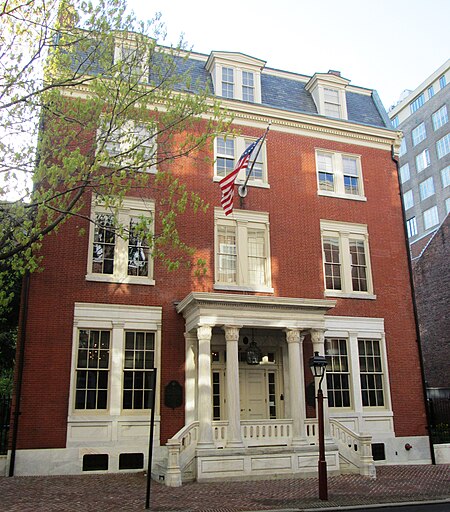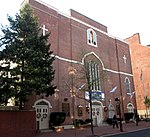Philadelphia Contributionship

The Philadelphia Contributionship for the Insurance of Houses from Loss by Fire is the oldest property insurance company in the United States. It was organized by Benjamin Franklin in 1752, and incorporated in 1768.The Contributionship's building, at 212 S. 4th Street between Walnut and Locust Streets in the Society Hill neighborhood of Philadelphia, was built in 1835-36 and was designed by Thomas U. Walter in the Greek Revival style, with Corinthian columns. The portico was replaced in 1866 by Collins and Autenreith who also expanded the living quarters on the top two floors by the addition of a mansard roof. A marble cornice between the third and fourth floors was also added. The building was listed on the National Register of Historic Places in 1971 and was designated a National Historic Landmark in 1977.
Excerpt from the Wikipedia article Philadelphia Contributionship (License: CC BY-SA 3.0, Authors, Images).Philadelphia Contributionship
South 4th Street, Philadelphia Center City
Geographical coordinates (GPS) Address Nearby Places Show on map
Geographical coordinates (GPS)
| Latitude | Longitude |
|---|---|
| N 39.946825 ° | E -75.148249 ° |
Address
South 4th Street 232
19106 Philadelphia, Center City
Pennsylvania, United States
Open on Google Maps









